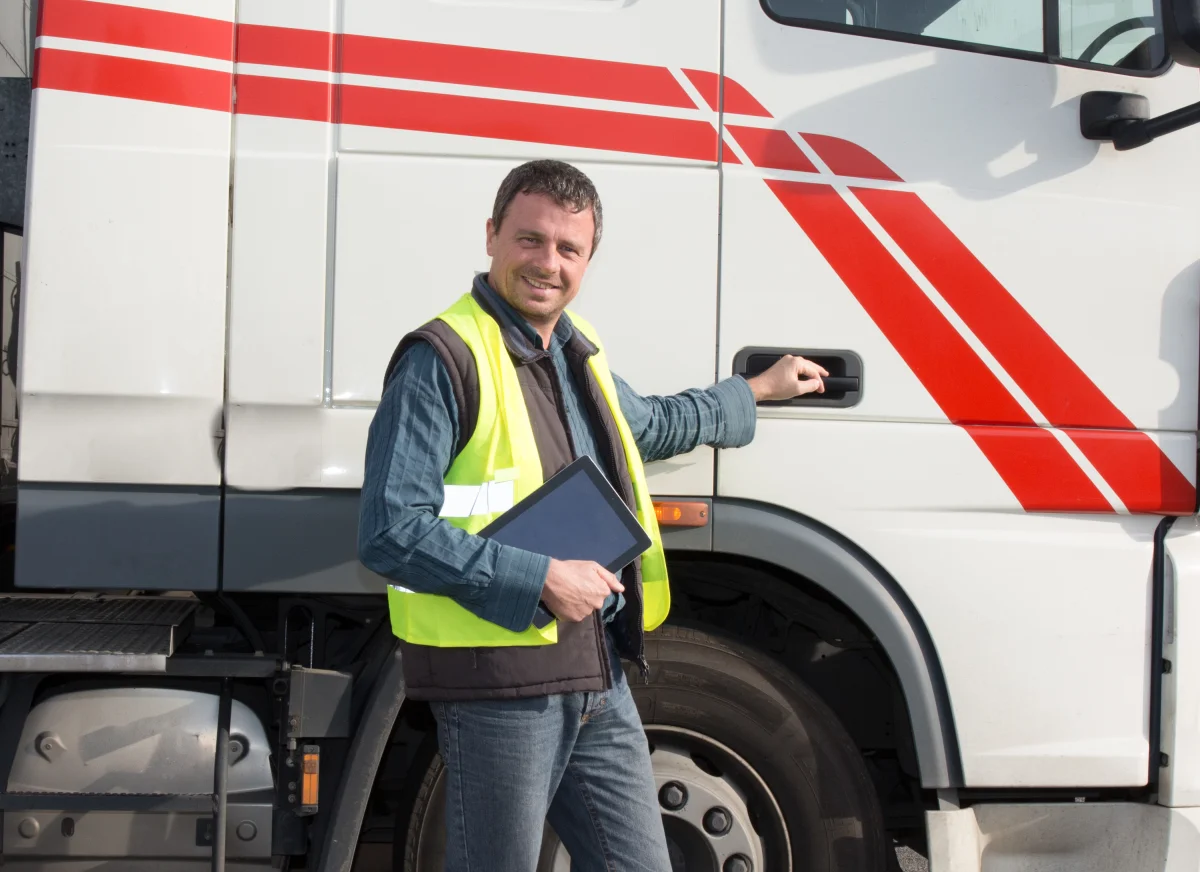The ultimate guide to overcoming HGV driver shortages

Is there still a UK HGV driver shortage?
Employment for HGV drivers has been steadily falling since the middle of 2017, when it peaked at 321,000. the number of HGV drivers fell to its lowest point of 253,000 by the end of 2021 (ONS Figures for drivers by nationality), since then numbers have risen slightly and were last estimated to be 277,000 in December 2022, still some 43,000 lower than the peak number in 2017.
An increase in the number of DVLA tests in 2022 (26,388 tests, 43% more than in 2019) and the current Cost-of-Living crisis, which is causing many people to cut back on their spending and demand for goods to be delivered, combined with fewer drivers retiring in the first half of 2022, could give the impression that the driver shortage is over.
However, an IRU report (the world road transport organisation) in November 2022 predicted that the European driver shortage is expected to triple by 2026 as 30% of EU drivers are expected to retire by 2026, with a much lower rate of new drivers joining the sector. The European-wide shortage will exasperate the situation in the UK as foreign drivers return to work within the EU and fewer come to the UK for work.
Over the last few years, UK HGV drivers’ pay has increased as companies try to retain and attract new drivers, with advertised salaries increasing by 25% year on year. This has helped, but, recruiting new and retaining current drivers will continue to be a top issue in the foreseeable future.
Why is there a nationwide shortage of HGV drivers?

An ageing population of drivers is one of the main reasons behind the current decline, the average age of an HGV driver is 48 and 30% of HGV drivers are over 56 years old. The rate of retirement in the UK is exceeding the rate of recruitment. HGV driving is still not a desirable profession, even with the recent pay increases. While many drivers have given up on the profession due to the long hours, stress, nights away from home and lack of parking spaces with quality facilities at truck stops.
Driver shortages have been known about for some time
The shortage of HGV drivers has been reported in the press as far back as July 2017 (The Irish News) while a report at the end of 2019 highlighted that 60% of HGV drivers are over the age of 44 and only a mere 19% were under the age of 35. This combination of an ageing workforce, low unemployment, declining EU net migration and difficulties in attracting new recruits to the industry has created a serious problem for commercial fleet operators.
How can you mitigate driver shortages with delivery route optimisation software?

The Shortage of HGV drivers is going to take many years to rectify and fleet managers are under immense pressure to find new drivers quickly to meet market demand.
The demand for home deliveries is still increasing, and with the volatile cost of fuel has created a perfect storm of rising costs and demand coupled with a shortage of drivers, making it difficult to capitalise on the demand of consumers.
Discuss route optimisation
So, what can be done to alleviate the driver shortage?
Descartes' Head of Marketing for Fleet Solutions in EMEA, Andrew Tavener, discusses how fleet operators can offset the impact of the driver shortage and rising costs by increasing the efficiency and retention of existing drivers.
Create efficient fleet operations

The first thing fleet managers should do is to improve their fleet efficiency.
This can be done if you make existing drivers and vehicles more productive to increase delivery capacity by optimising delivery routes and reducing the driver stress associated with completing large numbers of deliveries.
By analysing all available delivery options to determine the best combination of routes and stops to maximise delivery capacity, advanced route optimisation software will eliminate unnecessary miles from the delivery process, reducing miles driven and costs associated with unnecessary miles and fuel usage.
Maximising the number of stops per route
Utilising proven route optimisation and delivery scheduling software, existing Descartes customers have increased their delivery capacity by up to 35% and reduced the costs of their deliveries while also improving customer service at the same time.
Coupled with the most recent and detailed traffic data and delivery scheduling technology, fleet operators can boost their driver’s productivity and increase delivery density. this could be equivalent to hiring dozens of extra drivers for larger organisations.
Turn eco-friendly deliveries into a competitive advantage.
Sustainability is Not a Challenge, It’s An Opportunity
All fields marked with * are mandatory.
Please complete the below form to enable you to download the 'Sustainability is Not a Challenge, It’s An Opportunity' research report as a download.
Productivity can be increased by boosting delivery density, this is done by adopting dynamic delivery appointment scheduling software. At the point of sale, customers are presented with a selection of costed delivery options, and they can even be incentivised for choosing a time that is close to another scheduled delivery in their area.
Letting customers select an "eco-friendly" delivery option that emits less CO2 is not only advantageous for the delivery company in terms of improving delivery density but is also likely to boost overall customer satisfaction with the delivery service and business.

Enhance your HGV driver retention
Overcoming the driver shortage will require a focus on retaining your current drivers.
Commercial driving is stressful, and bad delivery routes may force drivers to rush in order to complete their deliveries, or jeopardise their adherence to the drivers' hours regulations, adding to their stress and eventually forcing them to retire or look for alternative work.
Reducing driver stress with realistic and achievable delivery schedules through the use of optimised routes that better reflect the road network, driving conditions, time of day, stop times, adherence to drivers' hours, and grouping of deliveries will improve their working day and enhance retention. Drivers will have more faith in their ability to complete the day's work and won't feel the need to alter their course, exceed legal speed limits, or violate their hourly schedule commitments to make timed deliveries if they have realistic delivery routes based on actual data.
New technologies such as artificial intelligence (AI) and machine learning can also be used to aid driver retention by identifying down-to-the-driver elements and building customised delivery routes that are dependent on the productivity or expertise of the driver. An experienced driver might be 10% more productive than a new starter. Machine learning can determine whether drivers are more productive and can handle more deliveries by identifying those who finish their work earlier than expected.
How to use technology to increase efficiency and improve a driver’s day

Using this technology to move beyond siloed deployments, transport operators can unlock greater efficiency gains whilst minimising the need to recruit new drivers.
For example, using tachograph analysis software to manage drivers’ hours is essential for compliance with the law. This information is also valuable outside the traditional compliance management remit and should form an essential component in optimising road transport operations. Feeding drivers’ hours data into route planning software ensures this information is included within the planning process by default and as such the schedule can be planned far more efficiently – there is no need for drivers to park up in laybys for a rest or to wait for scheduled delivery slots. Critically, no company or driver will have to face the choice between exceeding drivers’ hours limits or breaking a customer delivery promise.
By optimising operations, road transport operators can offset the pressure of driver shortages, for the benefit of the organisation, their existing workforce and indeed the industry as a whole.
Other possible solutions to the HGV Driver shortage
A number of possible remedies are being tried and implemented, from lowering the minimum driving age from 21 to 18, to increasing funding for training and testing, as well as improving HGV parking facilities.
But could the answer be to offer the ageing population of HGV Drivers or new drivers part time roles?

A number of bus companies are already experimenting with more flexible working hours to alleviate the bus driver shortage. Bus operators use part-time drivers over the weekend and evenings when drivers are looking for times that suit them and their lifestyle. The full-time drivers like that the part timers pick up the slack which enables them to enjoy their weekends, rather than them having to cover extra routes.
Part-time HGV drivers could also be part of the answer to the HGV driver shortage, but with additional drivers comes the extra difficulty of ensuring they are entitled to drive and keeping track of any penalties on their licence which could impact company insurance. An RAC survey found that 25% of drivers would not inform their employer of any penalty points on their licence. A robust solution to this otherwise laborious task of checking drivers’ licences with the DVLA, is to use software that automatically checks the status of the driver’s licence on a regular basis, automatically informing managers when endorsements are discovered. A solution such as Descartes’ SmartLicence is an obvious choice for this task.
Or will teenage HGV drivers be the answer to the growing HGV driver shortage?

The proposal to change the law around who can drive an HGV, originally laid down by Europe, and to allow teenagers to drive HGVs was first mentioned in the Queen's speech on 10th May 2022. Since then there has been a consultation by the UK Government and laws have been enacted to allow teenagers to drive HGVs.
An eighteen year-old became the youngest person to pass the UK HGV test and become a driver. Having passed his car licence test in October 2022, Gurrajan Dhaliwal went on to train as an HGV driver, passing his Grade 1 test early in January 2023, he then started driving HGV’s in February, 2023.
With around 60,000 drivers that could retire by 2028 it may not be long before we see more teenagers passing their HGV tests and becoming HGV drivers, helping to fill the shortage.
Whilst the current HGV driver shortage persists and more drivers are expected to leave the industry, commercial road transport operators must do all they can to improve the efficiency of their fleet operations and retain the drivers they have.
Summary
Using Descartes software and technology to move beyond siloed deployments, transport operators and fleet managers can unlock greater efficiency gains whilst minimising the need to recruit new drivers.
Road transport operators can offset the pressure from the increasing driver shortage by using Descartes route optimisation and delivery scheduling software to ensure that delivery operations are the most efficient they can be, and that each vehicle has the maximum number of delivery stops possible within the allotted time frame.
For more examples of how Descartes can help streamline road transport, and for more information on the technology Descartes can provide to optimise your operations with customs and routing software ready for the peak period, get in touch with our team here.



